Abstract
Howard, Dexter H. (University of California, Los Angeles) and G. F. Orr. Comparison of strains of Sporotrichum schenckii isolated from nature. J. Bacteriol. 85:816–821. 1963.—Several strains of fungi, tentatively considered to be members of the genus Sporotrichum, have been isolated from soil and from other sources in nature. The striking morphological similarity of these isolates to strains of S. schenckii led to a comparative study of their biological properties. Nine strains of Sporotrichum from nature were compared with twelve strains of S. schenckii isolated from cases of clinical sporotrichosis. The nine saprophytic isolates were indistinguishable microscopically and macroscopically from strains of pathogenic S. schenckii when cultures were prepared on a variety of media incubated at 28 C. Only two of the nine saprophytic isolates were able to grow at 37 C. These two strains partially converted, at this temperature, to a yeast-cell phase of growth. The blastospores comprising this phase of growth were similar to those produced by S. schenckii under the same circumstances. Six of the nine saprophytes were essentially avirulent for mice. The remaining three strains had a very limited capacity to produce disease in experimental animals. The isolates are currently regarded as variants of S. schenckii.
Full text
PDF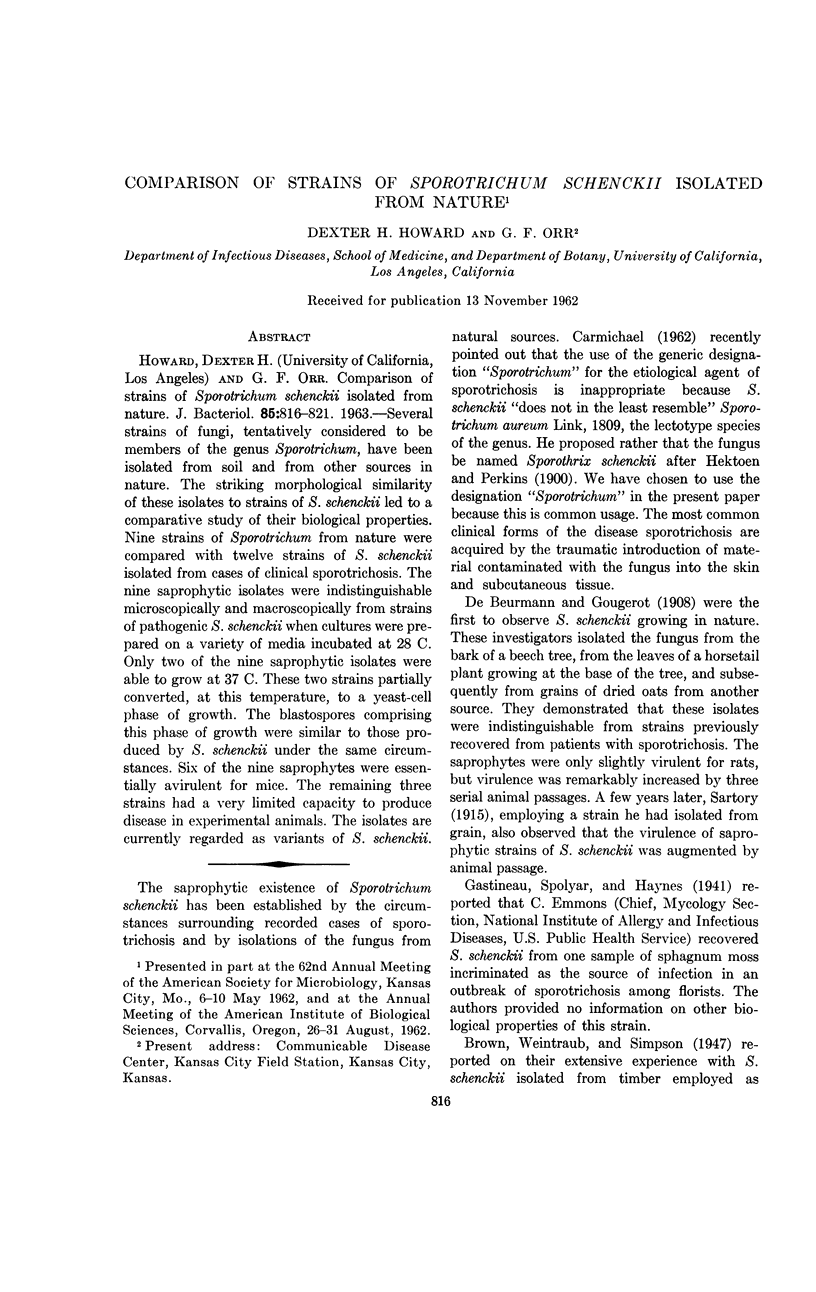
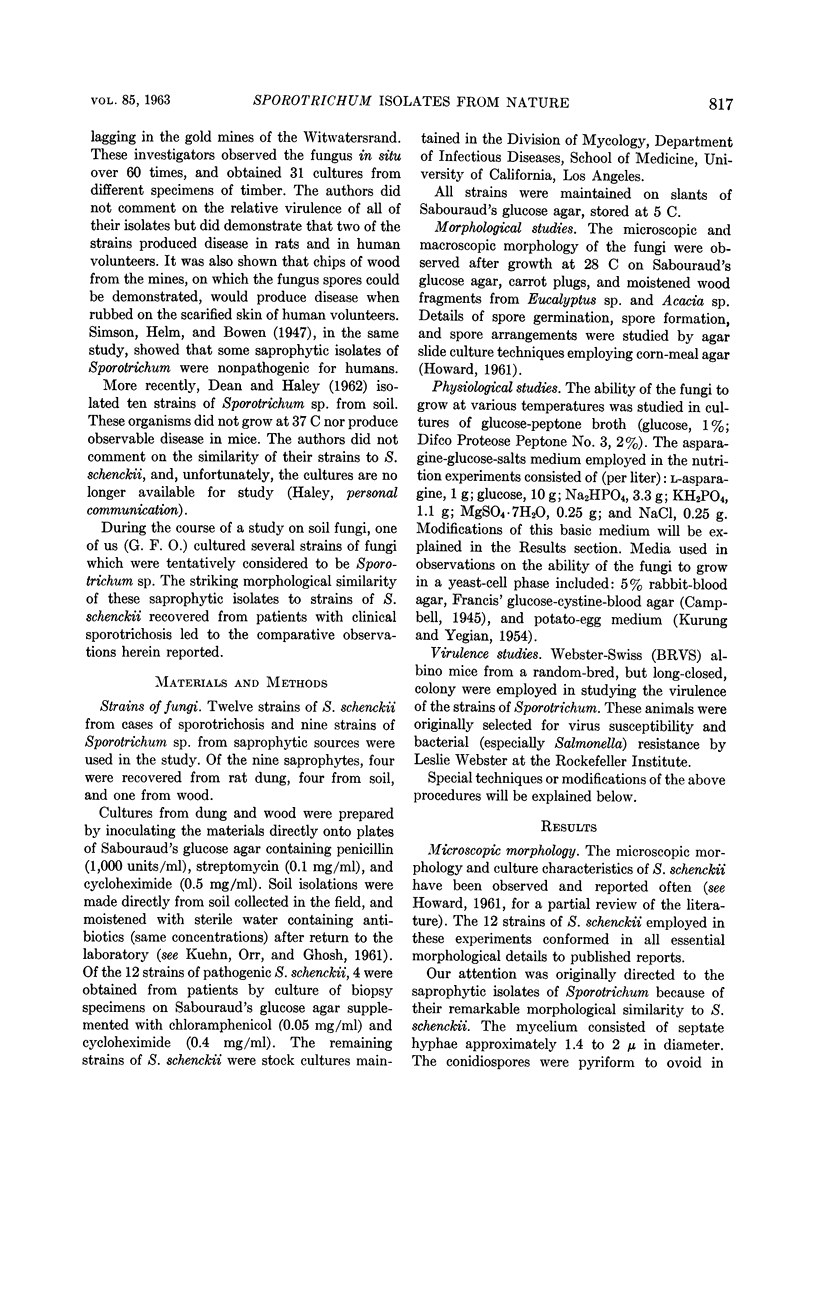
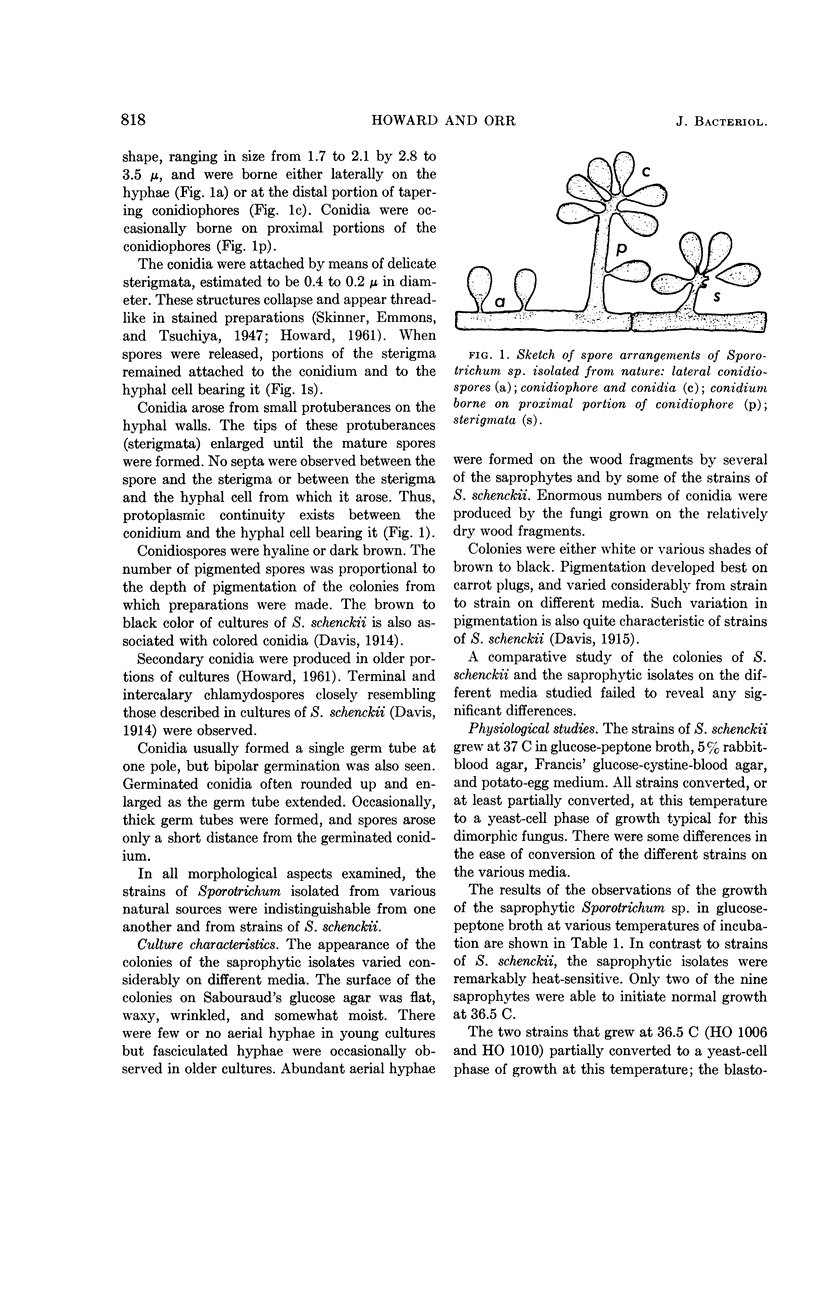
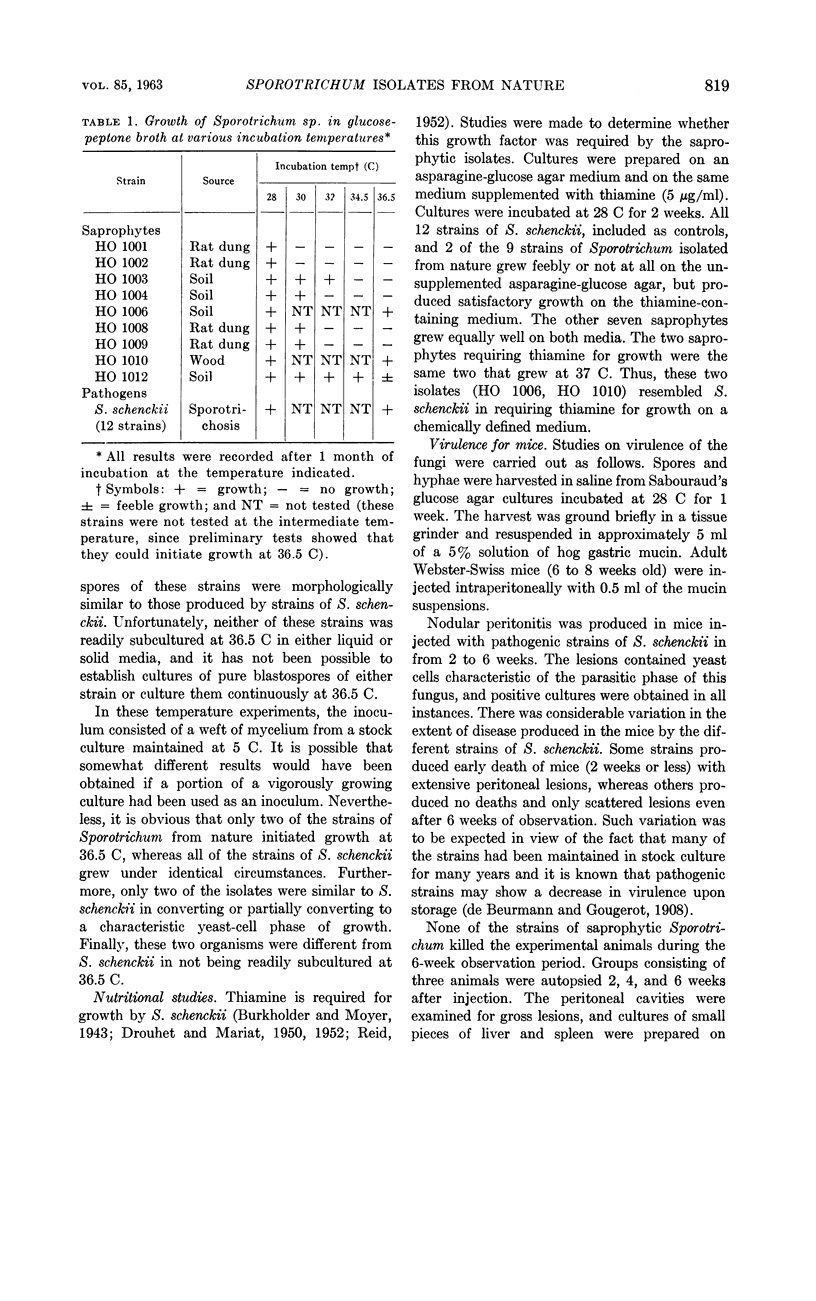
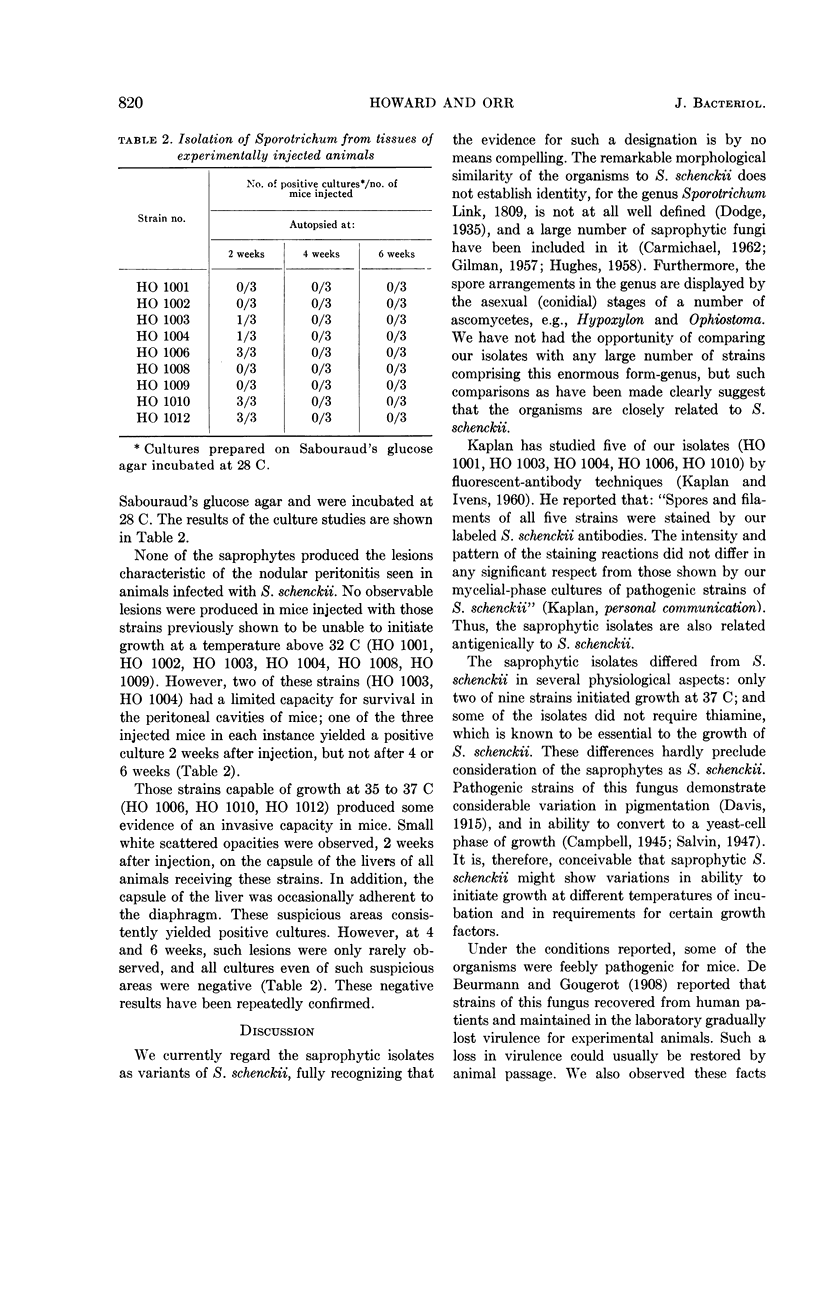
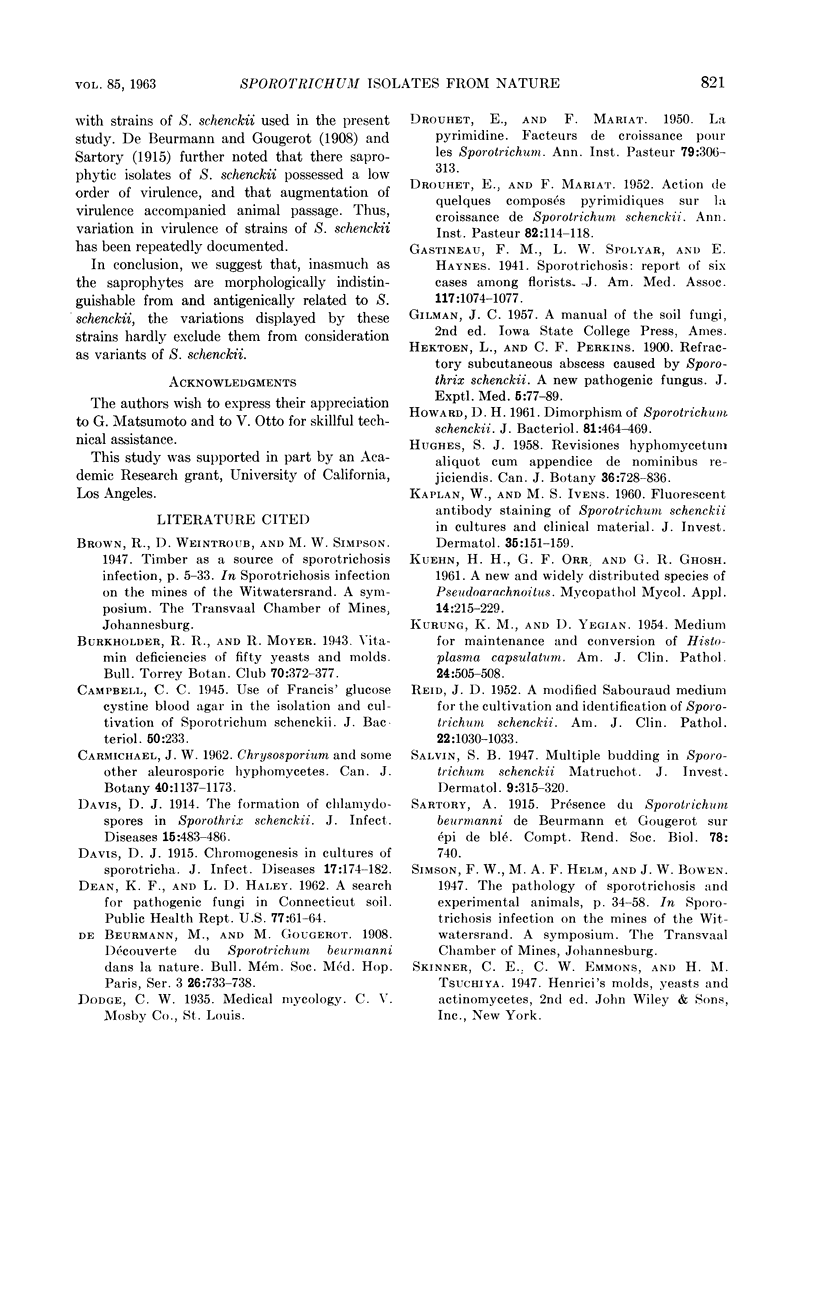
Selected References
These references are in PubMed. This may not be the complete list of references from this article.
- Campbell C. C. Use of Francis' Glucose Cystine Blood Agar in the Isolation and Cultivation of Sporotrichum schenckii. J Bacteriol. 1945 Aug;50(2):233–233. [PMC free article] [PubMed] [Google Scholar]
- DEAN K. F., HALEY L. D. A search for pathogenic fungi in Connecticut soils. Public Health Rep. 1962 Jan;77:61–64. [PMC free article] [PubMed] [Google Scholar]
- DROUHET E., MARIAT F. Action de quelques composés pyrimidiques sur la croissance de sporotrichum schencki. Ann Inst Pasteur (Paris) 1952 Jan;82(1):114–118. [PubMed] [Google Scholar]
- DROUHET E., MARIAT F. La pyrimidine, facteur de croissance pour les Sporotrichum. Ann Inst Pasteur (Paris) 1950 Sep;79(3):306–313. [PubMed] [Google Scholar]
- HOWARD D. H. Dimorphism of Sporotrichum schenckii. J Bacteriol. 1961 Mar;81:464–469. doi: 10.1128/jb.81.3.464-469.1961. [DOI] [PMC free article] [PubMed] [Google Scholar]
- KAPLAN W., IVENS M. S. Fluorescent antibody staining of Sporotrichum schenckii in cultures and clinical materials. J Invest Dermatol. 1960 Sep;35:151–159. doi: 10.1038/jid.1960.99. [DOI] [PubMed] [Google Scholar]
- KURUNG J. M., YEGIAN D. Medium for maintenance and conversion of Histoplasma capsulatum to yeast like phase. Am J Clin Pathol. 1954 Apr;24(4):505–508. doi: 10.1093/ajcp/24.4_ts.505. [DOI] [PubMed] [Google Scholar]
- REID J. D. A modified Sabouraud medium for the cultivation and identification of Sporotrichum schenckii. Am J Clin Pathol. 1952 Oct;22(10):1030–1033. doi: 10.1093/ajcp/22.10_ts.1030. [DOI] [PubMed] [Google Scholar]


